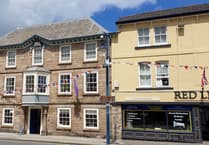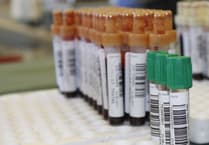DURING the early years of the 19th century one man, Albany Savile, controlled social and political affairs in Okehampton. His father, Christopher, had paid between £70,000 and £80,000 for much of the property in and around the town in 1806. With that property came great influence. Albany became recorder of the borough, which brought a permanent seat on the corporation, and from 1807 he became one of the two Members of Parliament for Okehampton. The electors of Okehampton consisted of the freemen and freeholders, and the patron (Savile) could appoint as many freemen as he liked so controlling the votes. He was not a member of the main political parties, the Whigs or Tories, and claimed in the House of Commons in 1919 that he wished to be considered as an independent man, and that he had never got anything for his vote in the House. Albany Savile was in fact born Albany Atkinson on July 9 1783 at 3 Park Street, Westminster. His father Christopher Atkinson was a corn factor in the City of London and also Member of Parliament for Hedon in Yorkshire. His mother, Jane, was the daughter of John Savile, of Enfield, a wealthy merchant. At about the time Albany was born his father was accused first of fraud, then of perjury, in connection with some of his corn trading. He was found guilty and expelled from the House of Commons. He was fined £2,000, sentenced to a year in prison, and was made to stand in the pillory for an hour outside the London Corn Market. After the completion of his sentence the family moved to France for some years where Jane Atkinson died. Eventually Christopher Atkinson managed to prove the fraud allegations had been false and obtained a Royal Pardon. In 1796 he was able to become MP for Hedon once more. In 1708 he changed his surname to Savile as the condition of a bequest from his mother-in-law. Albany Savile settled in Okehampton, first at a house called Sweetlands. In 1815 he married Eleanora Elizabeth Wrey, daughter of Sir Bourchier Wrey of Tawstock. Over the next 15 years they were to have 13 children, eight boys and five girls. In 1816 a new house was planned, which from planning to completion took over five years. On Christmas Eve 1821 a celebratory dinner was given for the hundred or so men who had worked on the building of Oaklands House, which probably stands on the site of Sweetlands. In 1818 Christopher Savile, at the age of nearly 80, became the second MP for Okehampton, although he died at his home in Chelsea the following year. Albany Savile resigned from Parliament in 1820 and settled into life as a country gentleman, although he still controlled the selection and election of the two local MPs. He took a great interest in local and county matters. In 1808 as MP he was one of the founders and donated ten guineas, and an annual subscription of one guinea, to the West of England Eye Infirmary in Exeter. In January 1822 it was reported that he distributed two fat bullocks, a quantity of bread and 20 pounds in silver among 720 poor persons of Okehampton. Until 1820 the main road out of Okehampton towards Launceston was on the steep hill now called High Street. Albany Savile paid for a new road to be cut into the side of the hill near Okehampton Castle, still called New Road. There were great celebrations associated with the opening of New Road. Even though it was a very wet day in November there was a procession including the Mayor and Corporation, the charity children, the men involved in the building, Mr Savile?s tenants and the principal gentlemen of the town. There were bands and flags and after speeches from the balcony of the White Hart there was a grand dinner and ball. About five years after that he built a road from the town centre and a bridge over the river to allow access to his lodge at the entrance to Oaklands Drive. For many years called Lodge Road, it is now known as Market Street. The creation of New Road had made a sharp turn at the end of West Bridge. In 1826 the mail coach to Falmouth overturned there severely injuring the driver. It was decided to realign and replace the bridge, and Albany Savile took the matter in hand, obtaining fine granite blocks and commissioning Charles Vokins who had finalised the design for Oaklands to design a suitable bridge. Before the work could start, Albany Savile died at Oaklands on January 26 1831 aged 47. It was reported that the cause of death was an inflammatory affection which had run its course with a rapidity baffling all medical assistance. The Mayor and corporation took over financial responsibility for the bridge, which lasted until it was replaced in the 1950s. It had been so solidly built that the army had to be brought in to blow it up. Albany Savile was buried in Okehampton Churchyard, and his grave is marked by a large cross surrounded by iron railings on the north east side of the church. Andrew R Janes



